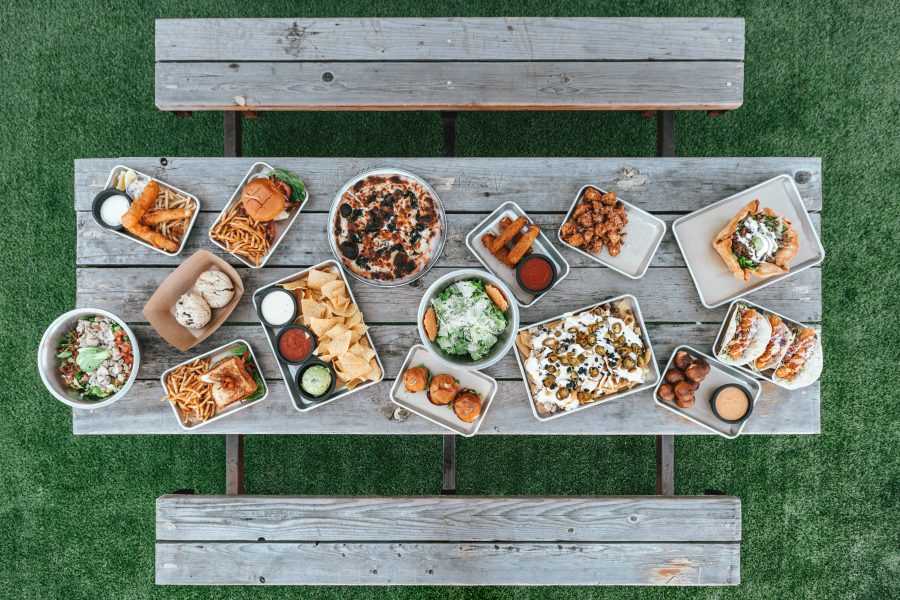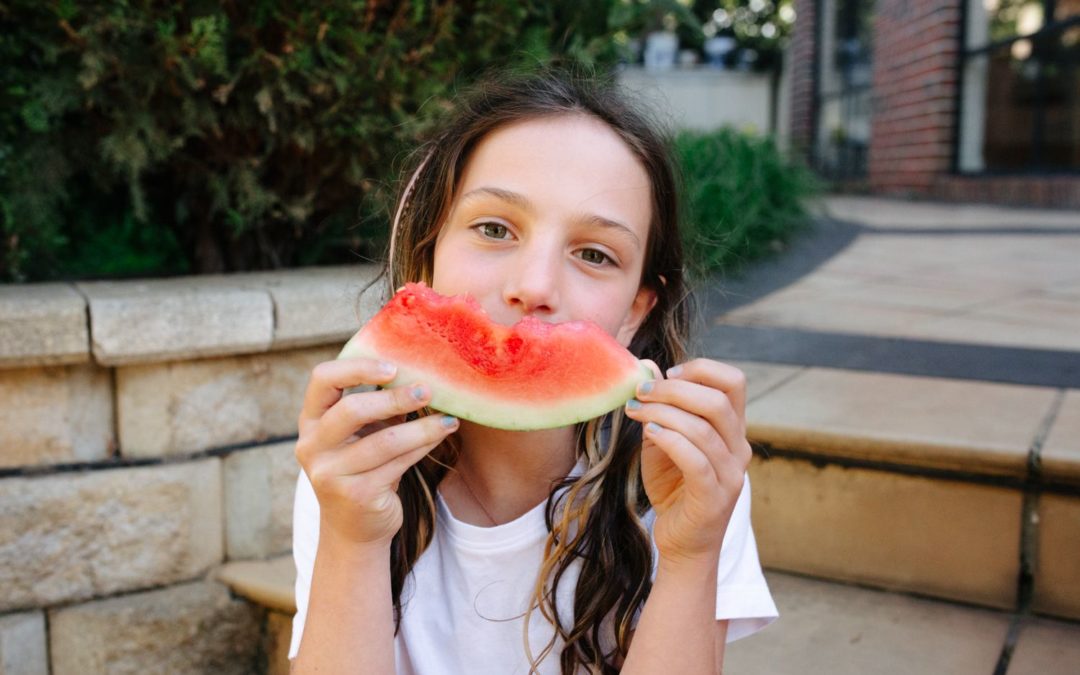Parenting is hard. Feeding children is hard. It is easy to get fixated on what our children do or don’t eat. Fixated on the food. To get caught up in the controlling food battles with our children. To concentrate on the food and what is eaten. But we can’t actually control what our children eat (sorry but we can’t). And that’s actually okay, because we can still help them to become more adventerous eaters by focusing on what is in our control….our reactions at mealtimes.
As a parent, the way you interact with your children during mealtimes shapes their eating habits, now and in the future. Of course we strive to be the most supportive and caring parent we can be, however sometimes the stress and pressure of feeding our children leads us to act emotionally and become easily frustrated.
It’s important to remember not to take it personally. What your child does or does not eat, is no indication of your personal worth or your parenting. Try not to get too disheartened if your child is just still learning to like many foods. And please, please, don’t compare your children, to their siblings or to other children. Everyone is different. We walk at different ages, we learn to read at different paces and we learn foods at different rates too.
Fussy eating is not your fault. But YOU are part of the solution. There are ways we can react to food situations that are more helpful to our children.
Let’s first investigate techniques we want to try and avoid and then look into what to do instead.
Unhelpful, but understandable, techniques often used to get children to eat:
- pressure/force: putting pressure on children to eat foods “come on just have one bite” “just try it” “we are going to sit here until you try at least one bite of (insert vegetable)” might appear to be successful in the moment, but it doesn’t usually have long term success. If you take away the pressure, would the child still eat it? It can also place tension on the relationship between you and your child. It creates an unpleasant meal environment, and when children are feeling stressed and anxious they are less likely to eat.
- overpraising: is a type of pressure (although a more positve one). Children eat for your praise. “I am so proud of you for trying that” or “good boy you ate all your beans today” can also undermine a child’s belief in themselves (“why are they saying that, they think I can’t eat this”). If you praise constantly, children will look for constant approval when they eat. They eat for external reasons. We want our children to build internal motivation for eating and listen to their bodies rather than reliant on external approval. Praise can also be judgmental as it is your opinion of them, not their opinion of themselves. Praise can be patronising. Our children know their hunger and fullness, they are learning to eat and we need to guide and trust them.
- rewarding with incentives: “just try this and you get a sticker” again this is creating external motivation and also a form of pressure. Rather than eating for themselves, they are eating for the sticker. This is a short term solution and we want our children to grow into adults who eat a variety of food. We know that when children learn to try foods in their own time, by giving them positive interactions with them (not pressure) then will grow to like them.
- rewarding with food: “finish your dinner and you can have dessert”. As well being another external motivator, this sets up some foods as better than others. That dinner is something that needs to be endured through in order to get the magical dessert. It puts dessert on a pedestal. And when we put food on a pedestal, we are more likely to become obsessed with it and want it more.
- bribing/negotiating: “three more bites and you can leave the table”, is another form of reward. And this example set ups that leaving the table is better than staying at it. Also forcing children to eat more bites when they are not hungry, teaches them to not listen to their body. Children are acually more skilled than adults at listening to their hungry and fullness cues.
- begging: just like pressure.
- over-restricting: in a bid to get children to eat some foods and not others, over-restricting sometimes occurs. Whilst we do want to expose our children more often to foods we want them to eat more often, studies have shown that over restricting your child of certain foods (example: chocolate, fast foods, sweet treats) has shown that they are more likely to over consume these foods in the long term. So do offer ‘healthy’ foods at more meal and snack times, but also offer all foods sometimes (and what is sometimes, well that is personal, but enough so children are not obsessed with certain foods). “Chocolate is not on the menu now but we can have some with afternoon tea or when grandma comes over tomorrow” is a helpful statement if children are asking for things at every meal.
More helpful reactions
Now I know the above techniques all come from a place of love. We want our children to be healthy and to eat. I too sometimes find myself resorted to some of the above when feeding my children. But the above just don’t have long term results in reducing fussiness and having a positive relationship with food. We feed our children sooo many times per day, it is easy to get overwhelemd. It is important to be kind to yourself. It’s hard. Here are some more helpful ways to help your children learn to like a variety of food:
Try and stay calm
Emotions are contagious. Children can sense our stress and anxiety. So after you prepare the food and before you bring the children to the table, take a moment. A very deep breath (hand on your stomach and feel it go in and out). Repeat a few times. Remember what your child does or does not eat is not your self worth. Remember they are on a food journey and that can take time. So when we are at the table with our children, we want to react calmly if they eat or don’t eat.
Here is a blog on helping to stay calm at the table: read more.
Describe the food (but don’t comment on the eating)
“Today we are having green, crunchy snow peas, these are like snow peas we had last week but flatter”. Use descriptive language to introduce foods (forget the nutrition preaching). “Would anyone like to try some of these creamy, soft mash potatoes today?” Important note: if the answer is a polite no, you have to respect that, if it is not polite kindly remind them to be polite.
Use descriptive language to describe the food, but try not to comment and interfere on what or how much anyone is eating (how much is eaten is the child’s responsibility: read more here)
Note: not using praise eating may feel mean. It is okay to use praise very sparingly, but make sure you save it for when you really mean it.
Believe
Believe your children can learn to eat and enjoy a variety of food. Just like we know they will learn to walk and learn to read in their own time. Given a supportive environment, positive exposures and time, your children will learn to eat. Although we want our children to be healthy eaters, focusing on the end result of eating, only backfires in the longterm.
Belive response ideas to “yucks” at the table (all in a casual tone): “learning new things takes time” or “please serve me some?” (and pass over the serving spoon).
Encourage manners
Praise is external, vague and outcome driven. Instead encourage them. Encouragement inspires children. It is process driven and looks at effort. It involves describing the actions plus the attribute we want our children to believe in themselves. It is specific. At the table, encourage manners (rather than eating or food as it is hard to encourage eating without accidental pressure).
“Thankyou for scraping your plate and putting it into the dishwasher, that was very helpful” (instead of “good boy”).
“I see you are really tried hard to sit still at the table, it is really thoughtful of you”
Encourage when you really mean it, children will see through fake encouragement.
Everyone comes to the table, but no expectations to eat
Family meals have been scientifically proven to help children be less fussy, to improve children’s mental health and even higher academic results. A family mealtime is at least one adult with children. It does not need to be every member of the family (some people might be out or still at work) but those that are home, join. Everyone comes to the table. But there is no expectation to eat. Remember it is the carer’s responsibility to serve food at regular intervals, the child chooses whether and how much to eat. So coming to the table is not negotiable, but eating is up to them (read more on table expectations here).
The amount of times my children have said “I’m not eating tonight” and I respond “that’s okay if you are not hungry, but you come to the table.” I also kindly explain when the next meal or snack will be (and it may be breakfast or may be a snack). This is just a reminder I do sometimes, not an ultimatum (so be careful of voice tone). Mostly they start to eat, as everyone else is. But not entering into the food power games, is helpful. And everyone enjoying the meal around them is powerful too.
Create a pleasant eating environment through non food conversation
You don’t have to talk about food or manners or eating or the meal, just create nice conversation. Tell jokes, family stories, ask questions about the day ahead or past, depending on the time. Younger children often respond better to specific questions rather than “tell me about your day”, ask “did you have art today, what did you make, was that fun?”. Other great conversation starters: “did anything happen today to make you laugh?”, “did you help anyone today?” “can you think of something you are grateful for?” “if you were an animal what would you be?”
Value trying away from the table
Trying is a growth mindset. Being willing to try, fail and learn. And we want our children to be adventurous eaters and try new foods but focusing on it at the table can backfire. We can encourage a trying mindset outside of the table with other activities. “It’s tricky learning to tie your shoelace, it is great seeing you be so persitant”. Remember to encourage the effort, rather than vague praise.
In conclusion…
Eating and feeding ourselves and our family is complex. Always remember to be kind and patient with yourself. If you find yourself reacting in a less helpful way, that is okay. Awareness is the first step. Good luck focusing less on the food and more on your reactions to it.
(If you are finding that you are overly stressed at mealtimes or you suspect your child has underlying sensory or motor concerns or your child has a very limited range of foods they will eat, individual support will help. Try contacting Simone from www.playwithfood.com.au, Marie-france from www.fussyeater.com.au or Kyla from www.mealtimes.com.au).
If you enjoyed this post you might be interested in our video on youtube:










